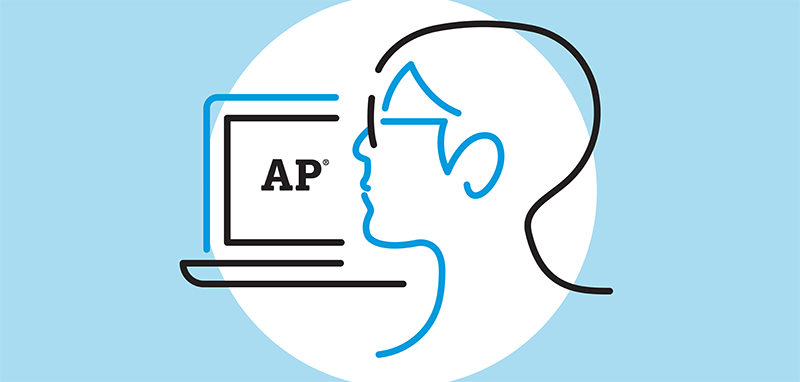Some AP Tests Move Digital

 by Devin Kosiorowski ‘24
by Devin Kosiorowski ‘24
This year Sherwood had the option to voluntarily offer digital formats for some AP exams and among the classes that made the switch were AP Computer Science Principles, AP European History, AP Modern World History, and AP United States History.
APUSH teacher Caitilin Thompson decided to have her students take the digital exam. “Potential pros [of going digital] I thought about: preparation for the future; typing is easier than writing for many kids, and often typing is faster than writing; it will provide consistency in AP test experience,” explained Thompson. “Potential cons we thought about: it’s a brand new platform; there could be kinks in the operation; how will students be able to ‘mark up’ the test — eliminate answer choices, highlight, make notes, etc.”
Despite this, sophomore Sanjeev Linga, a student who took the APUSH exam, expressed his concern with the digital exam. “The multiple choice was challenging because we didn’t get to annotate and it just wasn’t convenient at all,” said Linga.
However, other students seemed to like the switch to the digital exam. Junior Elisha Mae Gabriel took the digital AP World exam, which has the same exam format as the APUSH exam. “I liked the fact that I could see my own time. It allowed me not to look up and possibly get distracted,” explained Gabriel.
Despite schools across the nation facing application crashes, causing them to reschedule exams for different dates, digital testing went smoothly for Sherwood this year. “We were really happy with how our four digitals went this year to the point where we’d be looking at doing mostly, if not all, digital for those that are offered [next year],” said math teacher Rebekah Byerly, who is Sherwood’s AP Coordinator.
While CollegeBoard did give schools the option to go digital with the exams, the teachers for both AP Language and Composition and AP Literature decided to stick with the paper version of the exam this year. Following the exam, AP Lang teacher Alexandra Green gave her students a survey in order to hear their feedback. Green’s students concluded that there were more downsides to the digital exam than there were to the paper exam. Students of Green that had taken other digital exams argued that annotating using the digital platform was more difficult than using pen and paper. Additionally, the paper exam was easier to focus on as the digital exam gave students “screen fatigue” as well as the non-stop, distracting noise of students typing all around them. When looking at all these factors, Green’s AP Lang students also did find upsides to the digital exam. This includes the unlimited writing space students are provided with, a timer that is always provided on the screen, and the fact that students don’t have to worry about messy handwriting when typing.
From her perspective as the AP Coordinator, Byerly argues that the digital exams are much less of a hassle to administer than the paper exams. “[Students] don’t have to do bubble sheets at the beginning so there’s no general instructions, which saves a lot of time in starting,” said Byerly. Paper exams also have to be collected in a specific order without error in order to make sure that all exams are being evaluated accurately. With digital exams, no papers have to be distributed or collected, and the only possible concern is that students remember to bring their fully charged chromebook.